Who knew urban farming was so hard?
First of all, I am no gardening expert but I have been through numerous trials and errors in making my urban HDB for a few years now and here are my best advice all compiled together. This article is rather long as it covers everything from grow lights, and potting medium, to actually growing your vegetables from seeds, as well as some telltale signs of common problems and solutions.
All these are tried and tested in my own HDB environment, I have the worst black thumbs in the world (just ask my husband how many plants I have murdered) and, if I can have success, I’m sure you can too!
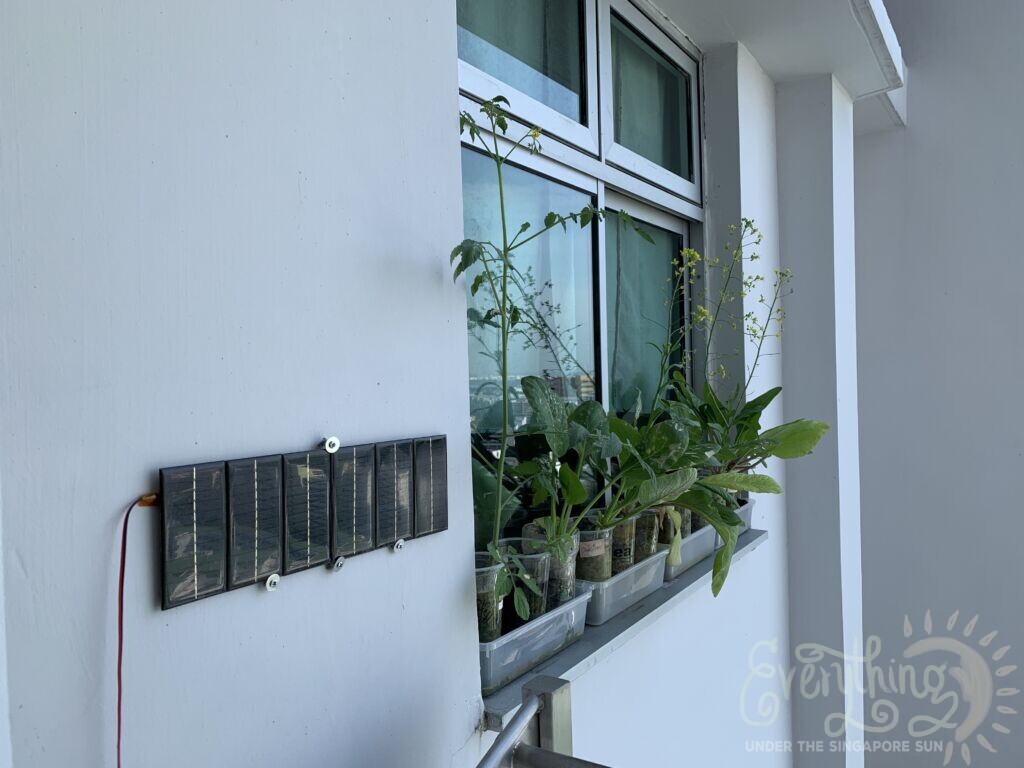
Plants Need Three Basic Ingredients to Thrive
Stating the obvious here but plants need these three things: Sunlight, Water and Nutrients. They way they can get all these three to thrive differ; from grow lights to hydroponics.
Water and nutrients are pretty easy to provide consistently every day. Usually they only need watering once a day, unless the weather gets really hot. And nutrients and fertilisers can be homemade or store-bought.

Let There Be Light
The main issue we have living in HDBs or Condos is the lack of good sunlight. If you are growing vegetables and fruiting plants, they tend to require at least 4 hours of full sun a day. Needless to say, that is a very scarce commodity if you are living in a HDB or apartment so find the sunniest spot in your house to start growing your plants or resort to using a grow light. If you have a balcony, that is the best case scenario. If not, try the corridor if your neighbours are fine with it — Tip: Promising to share your harvest usually gets them onboard!
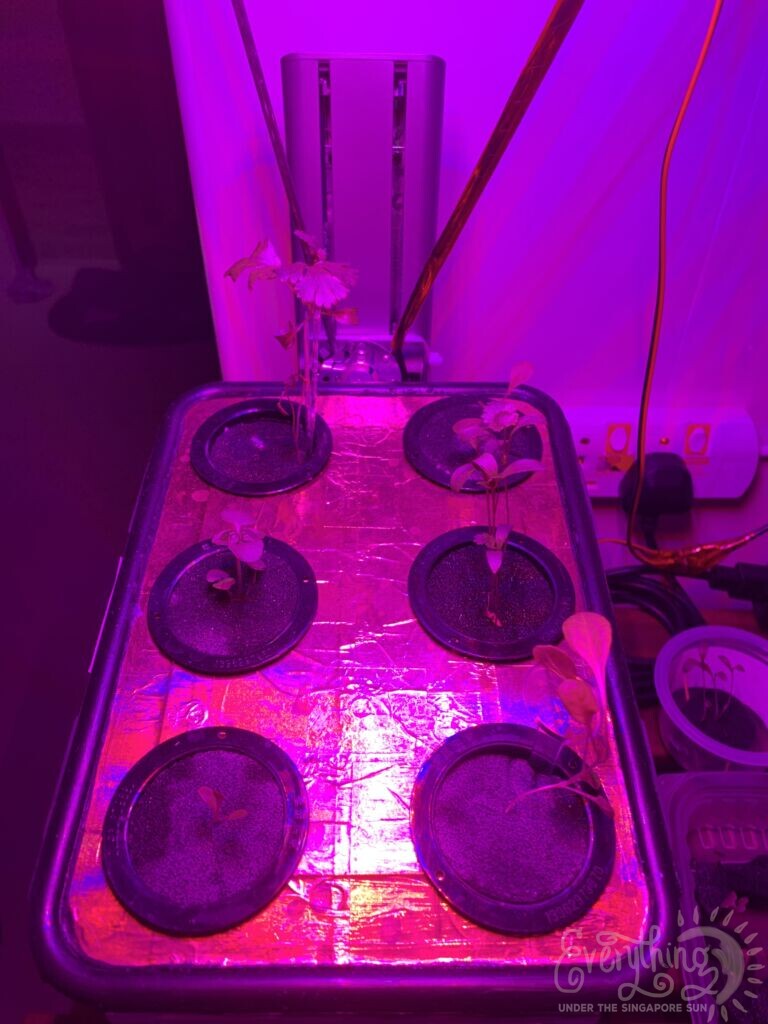
Grow lights: I have a lot of success with grow lights and get that question a lot. Here is what you need to know about grow lights.
- Do store-bought ones work? Yes and no. It depends on the intensity aka wattage of the light. The higher the wattage, the closer it mimics sunlight.
- Which is better? Burple (blue and red) or white lights? White lights are easier on the eyes so if you are placing your plants in an environment where you will be looking at them all the time, consider white. Otherwise I would recommend burple lights as they are more energy-efficient as they do not have to produce the green wavelengths of light that plants do not need. The best ratio for growing leafy plants light vegetables is 3 red to 1 blue light.
- Where do I buy grow lights from? Any online marketplace will sell these and, like I mentioned above, the higher the wattage, the better. They can get rather dear, so my husband resorted to making our grow light lamp out of 1W led bulbs.
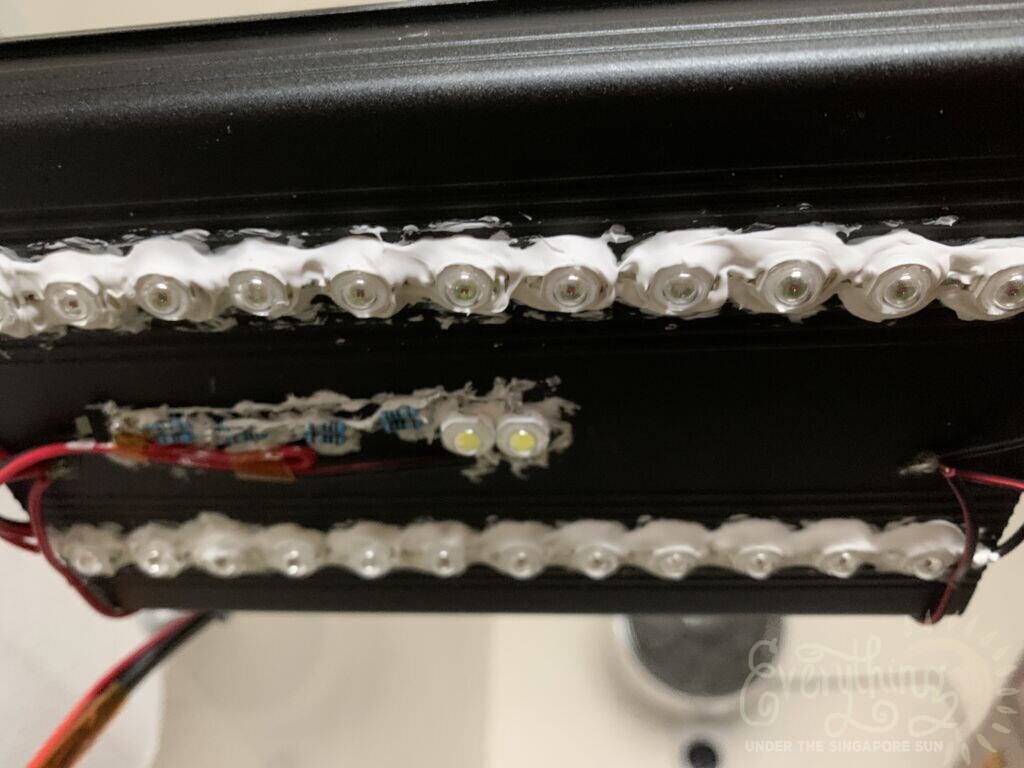
Water Matters
DO NOT USE WATER STRAIGHT FROM THE TAP! Singapore uses chlorine in the water and that will kill most plants, especially seedlings. Use overnight water (best if left for two nights or more), or rainwater. You can also use cool boiled water but do save that for drinking unless you are growing a money tree.
The best time to water your plants is around 10am, right before it gets hot. Water until you see that a little water starts dripping out of the pot. In fact, because our weather is very humid, it is very easy to “drown” your plants in Singapore and they will suffer from root rot. Use a well-draining pot and a suitable potting medium.
The best potting medium recipe: 90% Garden Sand (not sand from the beach!) mixed well with 10% organic compost. Yes, you read that right, SAND! Trust me, it works like a charm. Sand works so well in Singapore’s climate and it is cheap as well!
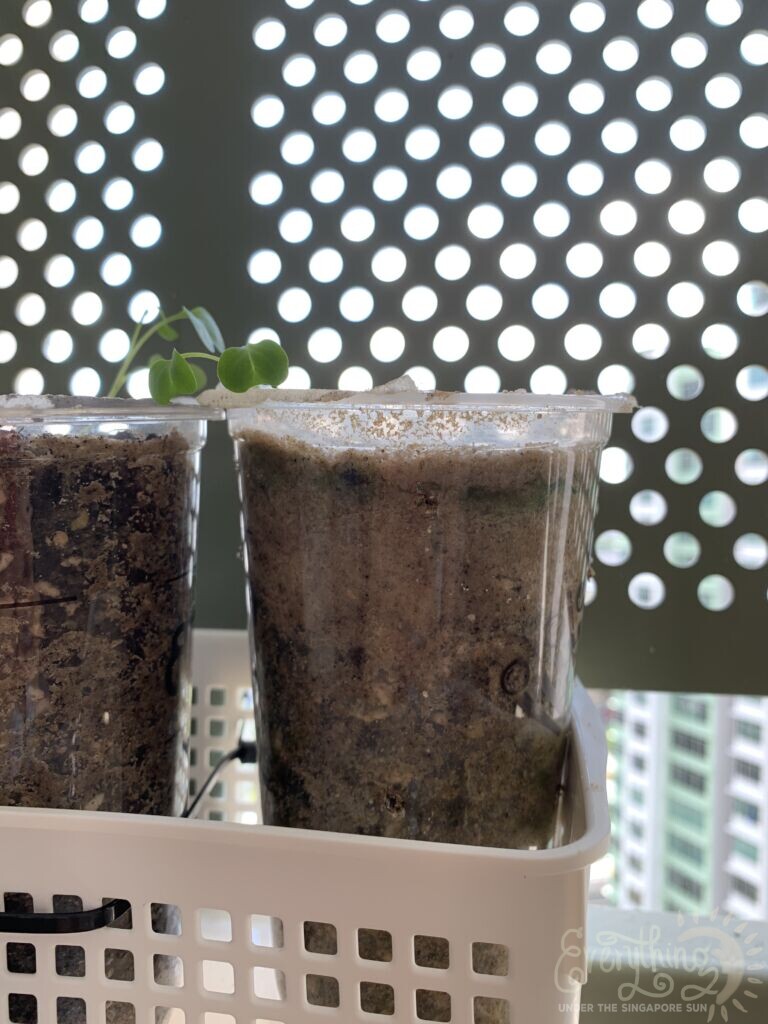
Fertilisers
Fertilise once a week with just a quarter to half of a teaspoon of organic fertiliser per vegetable or fruiting plant. I prefer worm compost but any organic fertiliser will do. Organic fertiliser is better because you can just eyeball the portion without worrying that your plant will get burnt if you put too much. You may be tempted to put more often than once a week, so don’t!
I Blame the Seeds
Honestly, I thought I had a “seeds” problem because they don’t sprout very well or just die after you see the tiniest signs of life. However, most seeds, especially local ones, only need water to sprout. I find that putting a seed on a sponge (for plants) soaked with water has the best success rates. Just make sure the water does not dry up and the sponge is kept damp all the time. Don’t be so rushed to transplant into a pot too early too. Wait for at least 2 pairs of leaves or they are around 10cm tall before transplanting.
Size Matters
Most vegetables like chye sim, kai lan, kangkong, Xiao Bai cai, like deep pots. Make sure your pot is around 6cm wide but at least 15cm deep. I use plastic cups because most of these vegetables, with the exception of Kangkong and spinach, like to be isolated to grow well. #Protip: Large Bubble Tea cups would do perfectly.
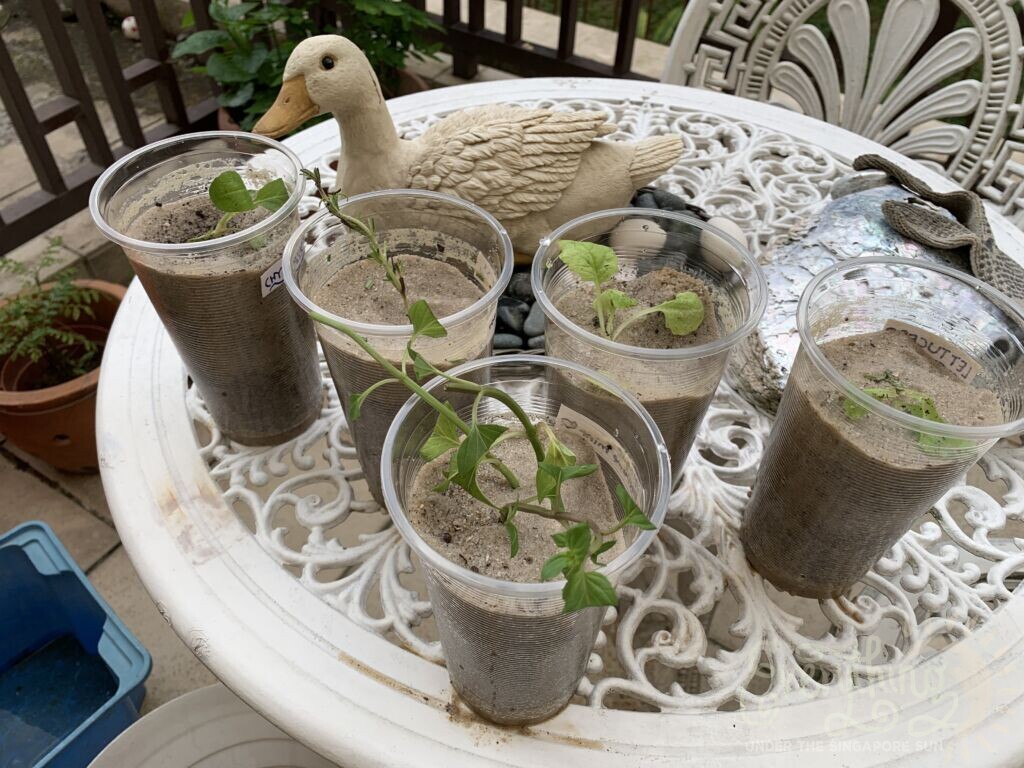
Propagating Plants
Most herbs like basil, rosemary and mint can be propagated by cutting a length of around 6 inches of a stalk. Use a clean pair of scissors to cut all the leaves from the last nodule and 80% of all the leaves from the rest of the stalk. Put in cool, boiled water and place in a bright shaded area, but not under the direct sun or strong wind. When you see that it has grown a bunch of roots, you can safely transplant into a pot.
That’s all there is to it! While it is not rocket science, all the little things add up to a successful harvest.
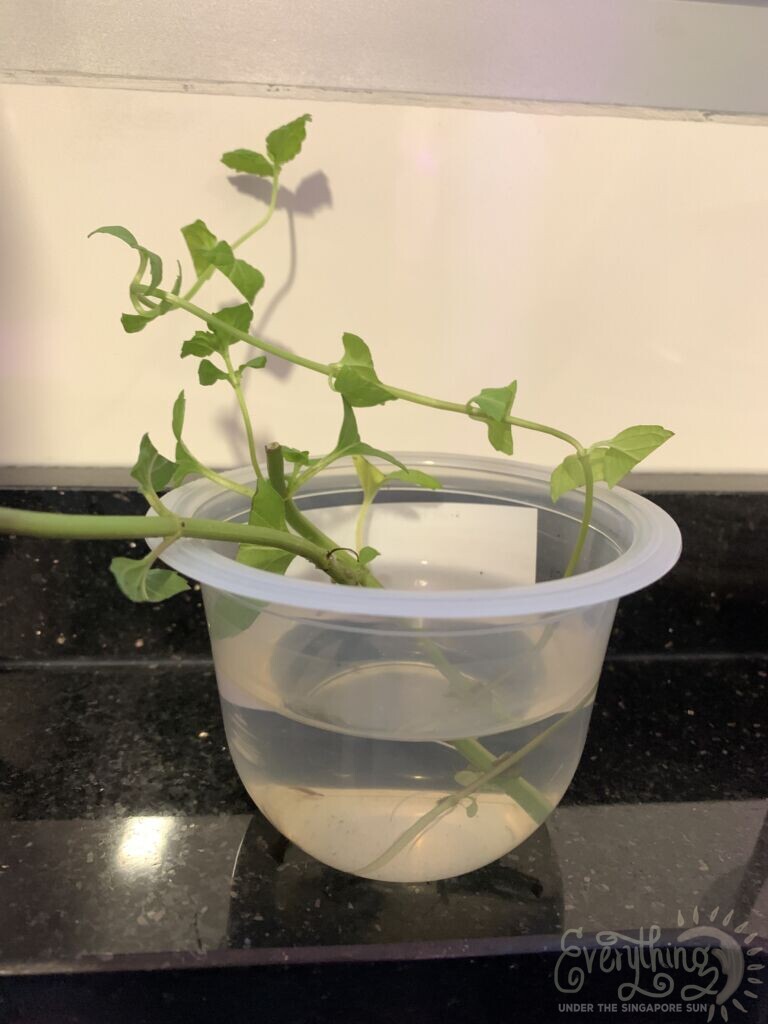
Help! What is wrong with my vegetables?
Yellowing leaves: Typically a sign of overwatering or soggy soil. Make sure your soil is well-drained and well-aired before watering again.
Leaves with dark brown edges: A sign of root rot or unhealthy roots. Change the soil medium if it the roots are not too damaged. If they are damaged, there’s no hope and you will just have to start over.
Leaves with dark or light spots: If you don’t see any pests, then it is likely that they are diseased. If there are pests, the best way without harming your plant is to use a handheld pressure spray to jet them away. If it is a sign of disease, mix plant enzymes or spoilt milk with some water and spray a fine mist on the leaves of your plant. Enzymes and spoilt milk both contain probiotics which can make your plant stronger and fight off infection.
My seeds are still not sprouting after a week in water: Seeds have a shelf life and if you are not planting them so soon, do put them in a zipper bag and store them in the refrigerator. If you are certain that your seeds have not expired, try “waking” the seeds up with warm water instead and putting them in a warmer area of the house or garden.
Why are my plants so stalky or leggy? Plants always reach for the sunlight so it is a sign of inadequate sunshine. Relocate your plants or increase your grow lights.
Where do I get gardening supplies in Singapore? World Farm sells cheap and good quality gardening supplies. You can get nearly everything there from fertiliser to sand. You can also get affordable pots, little home-sized rakes and spades from Daiso.
World Farm’s address is 15 Bah Soon Pah Road, Singapore 769962
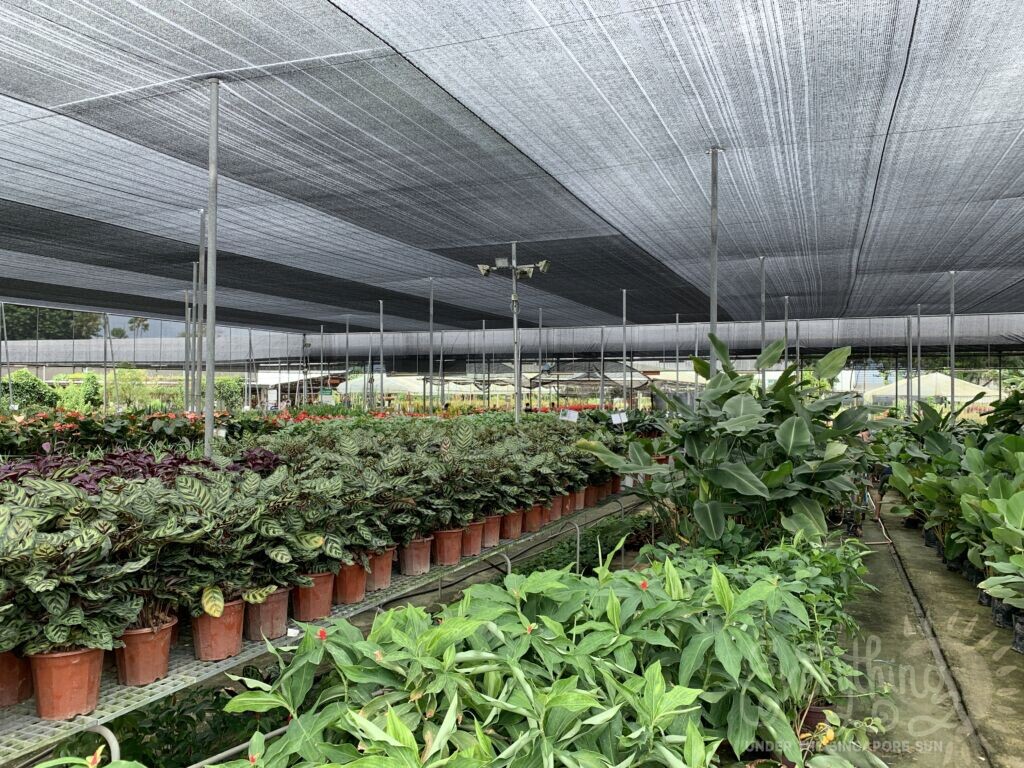




Hi Rachel and Jonathan,
There was an error prompt after I sent my message to you. Will resend now.
Thank you for sharing your experience on growing vegetables in your apartment. It has greatly benefited me in my preparation to grow some vegetables with my child.
May I check do you sow seed in bubble tea cup and let it continue growing there or do you sow seed in bubble tea cup and repot after the plant has reached a certain height? One seed per cup? Also, would you recommend kang kong, cai xin, xiao bai cai or kai lan for a start?
Thank you so much!
No repotting required for most vegetables (only trees and larger plants need repotting), just make sure you have 5-6 inches depth of soil for them to grow healthily. I have great success with Xiao Bai Cai and White Bayam. Somehow kangkong always does not grow for me but some people say they are the easiest to grow.